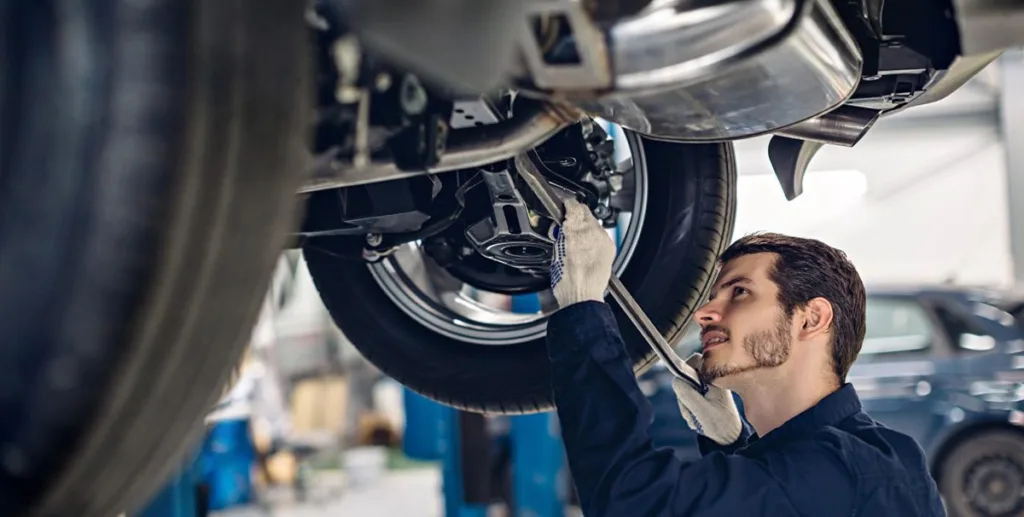All Categories
Featured

Two essential services that are commonly neglected yet have a considerable effect on tire durability and efficiency are tire rotation and positioning. Allow's dive right into what tire rotation and positioning are and why they're essential for your automobile.
What Is Tire Rotation? Tire rotation is the procedure of moving your tires from one position to another to ensure they use equally. Since your cars and truck's tires operate at different rates depending on their placement (front tires versus rear tires), turning them regularly aids to distribute the wear uniformly, leading to a much longer life expectancy for your tires.
Tires on the front axle tend to put on quicker than those on the rear axle, specifically in front-wheel-drive cars, where the front tires deal with both guiding and power. On the other hand, back tires may wear erratically depending on the automobile's weight circulation and driving conditions. By turning your tires every 6,000 to 8,000 miles (or as advised by the supplier), you'll make sure a much more well balanced wear pattern.
What Is Tire Placement? Tire positioning, also referred to as wheel placement, refers to readjusting the angles of your cars and truck's wheels to the maker's specifications. Correct placement makes sure that your tires are directing in the best instructions, and it assists take full advantage of tire life and enhance car handling. There are three primary aspects of placement: camber, wheel, and toe.
Camber describes the tilt of the tires from the front of the automobile. If your tires are slanted way too much inward or outward, it can cause irregular wear. Wheel describes the angle of the guiding axis when checked out from the side of the car. This impacts the security of the guiding, especially when driving straight. Toe refers to the angle at which the tires aim inward or outward when seen from above. This influences how your vehicle tracks when driving. A proper alignment guarantees that all four tires are pointing directly ahead and are tilted properly. Imbalance can result from striking pockets, curbs, or just from the wear of suspension elements in time.
Why Tire Turning and Positioning Matter. Extended Tire Life. Both tire rotation and alignment aid stop uneven tire wear. When your tires use evenly, they last much longer, which can save you cash in the future by minimizing the requirement for early substitutes.
Improved Security. Appropriate tire turning and positioning improve car stability and handling. Misaligned tires or erratically used tires can adversely affect your ability to guide and quit your automobile, particularly in emergency situations. Routine maintenance guarantees your tires perform ideally, giving a more secure driving experience.
Much Better Gas Performance. If your tires are not aligned correctly, they may drag versus the roadway surface area, triggering resistance. This additional rubbing can reduce fuel efficiency, creating your lorry to consume even more gas. Normal tire placement makes certain that your car moves successfully, enhancing gas mileage.
Enhanced Comfort. Imbalance or unevenly used tires can cause a rougher trip, as your vehicle might draw to one side or cause vibrations. By maintaining your tires rotated and straightened, you'll take pleasure in a smoother and much more comfy driving experience.
Signs That Your Tires Need Rotation or Placement. It's vital to remain alert for any type of signs that your tires need rotation or positioning. Keep an eye out for these usual signs:
Uneven Tire Wear: If you observe that one tire is substantially extra worn than the others, it might be time for a rotation or alignment. Steering Pull: If your cars and truck draws to one side while driving directly, this can indicate misalignment. Resonances: If you really feel resonances in the steering wheel or the vehicle itself, it can be a sign of imbalance or uneven tire wear. Squealing Tires: Uncommon tire noise can also show incorrect alignment or the requirement for a tire turning. How Typically Should You Rotate and Align Your Tires? Tire rotation need to usually be done every 6,000 to 8,000 miles or as defined in your lorry's proprietor's handbook. It's a good concept to turn your tires during every oil change, as this will certainly assist you remain on top of normal upkeep.
When it comes to positioning, it does not require as frequent service. Commonly, placement should be checked a minimum of yearly or whenever you notice concerns like drawing away or vibration. You may also require positioning if you've struck a big pit or aesthetic, which can throw your wheels out of placement.
Conclusion: Maintain Your Tires in Leading Forming. Tire rotation and placement are important services that keep your lorry running smoothly, securely, and successfully. By putting in the time to have your tires rotated and straightened regularly, you're buying your auto's efficiency and durability, while additionally enhancing your safety and security when driving. Stay positive with tire upkeep, and your car will thanks with far better gas economy, enhanced handling, and extended tire life.
Latest Posts
Detailed Auto Repair Work Provider Available! at Car X Tire & Auto
Exactly How Bathroom Fitter Became Metro Detroit's Go-To for Bath Remodels
NAPA AutoCare Certified: Rely on Montclare Auto Repair for Professional Workmanship
More
Latest Posts
Detailed Auto Repair Work Provider Available! at Car X Tire & Auto
Exactly How Bathroom Fitter Became Metro Detroit's Go-To for Bath Remodels
NAPA AutoCare Certified: Rely on Montclare Auto Repair for Professional Workmanship